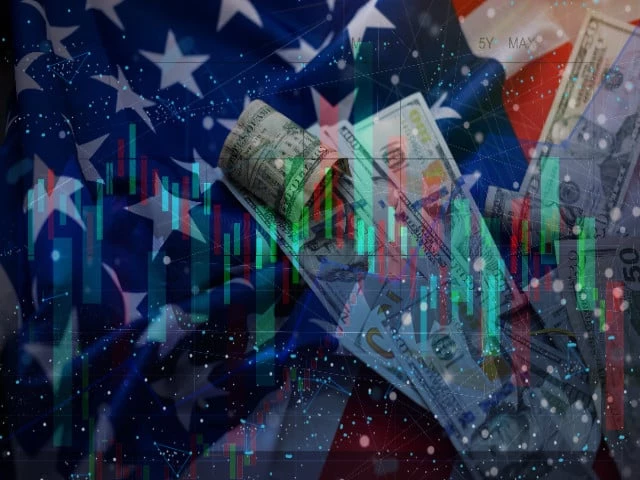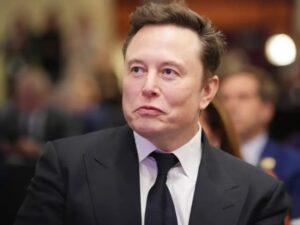Karachi:
From the perspective of the American presidential election, Donald Trump defended radical trade rates on foreign products as a magic sedan that will help “make America again” again “by earning billions of dollars of income, stimulating industrial growth and creating millions of jobs. Great global economy.
It was not random. Politics involved a strategic approach based on trade sales and security relationships. Countries with American trade deficits and defense ties, such as Australia, have received 10%tariffs. Japan and South Korea, despite similar security alliances, were faced with 15% due to larger surpluses. The rest of the Asian nations was slapped with average tariffs of 22.1%, although those who wish to negotiate – such as Pakistan, Thailand, Indonesia, Malaysia and the Philippines – obtained a “discount” rate of 19%. The most surprising victim of Trump’s prices was the strategic ally of America, which faced 50% of functions – the highest after Brazil – for refusing to stop buying crude in Russia.
Trump seems to have gained the upper hand in the tariff war, because most American trade partners – including the European Union – have finally accepted unfavorable commercial terms, distrusting economic reprisals and the risk of losing access to the US lucrative market. Even Canada, which initially responded with reprisal rates, has started to reduce some of them. However, China, the main target of Trump’s pricing strategy, refused to yield and responded with substantial counter-prumps. This dead end led Trump to declare two consecutive 90 -day “trèces” while the two nations continue negotiations to a compromise.
While Trump may have won the first round of the trade war on the diplomatic front, the economic objectives he was looking for remain largely dissatisfied. The American president’s decision may not have upset the international financial system, as analysts feared earlier, recent data reveal that the pricing strategy stimulates inflation, disrupted supply chains and the hardest on the home labor market – consequences that strike workers and American consumers.
Trump sought to protect American jobs, especially in manufacturing, encouraging interior production and discouraging imports by making foreign goods more expensive thanks to prices. Such measures, according to supporters, can restore industrial Heartlands dug by globalization, but criticisms say that the economic costs of prices eclipse their advantages.
One of the immediate consequences of prices was a visible increase in prices across America. According to the consumer price index (IPC) report in July 2025, overall prices increased by 2.7%, with food costs by 2.9%alone. A large part of this inflation is allocated to prices on agricultural and industrial imports. This price wave is not limited to food; Other consumer goods, including electronics and cars, have also become more expensive, disproportionately affecting low -income and medium to income, who spend more of their income.
If Trump’s economic logic was to trust, the United States would expect solid employment growth – especially in industries directly targeted for protection. However, American media reports tell the opposite story: job creation has been practically blocked since the beginning of 2025. Although the unemployment rate remains low, fresh recruitment has decreased and key industrial sectors are struggling. The report on the jobs of July 2025 indicates a net gain in the jobs, but it did not succeed in expectations and revealed slowdowns in manufacturing and construction, the sectors which, according to Trump calculations, were supposed to benefit from prices.
Trump’s prices had to trigger reprisals. And that’s exactly what happened. The American president has managed to intimidate certain countries to accept unfavorable agreements, but the three main American trade partners – China, Canada and Mexico – responded with targeted measures against the American agriculture, technology and manufacturing sectors.
Consequently direct, American exporters now find it difficult to remain competitive on the markets abroad, establishing additional pressure on workers even that Trump claims to protect. Likewise, American farmers have seen the request for soy, pork and dairy products, resulting in farm closings and growing dependence on federal subsidies to stay afloat.
An analysis of March 2025 by CNBC indicates a large consensus among economists, both conservative and liberal, that Trump’s prices are unlikely to give supported economic advantages. These economists argue that prices act as a regressive tax, hitting lowest low -income households. Their evaluations predict long -term drag on GDP and a net loss of jobs, especially when taking into account reprisal rates. Although certain industries can undergo modest employment gains, they should be offset by job losses in other sectors, in particular those that depend on imported inputs or export markets.
Politically, Trump’s prices offer a simple message: “We make America again large.” But austere economic reality is much more complex. While trying to protect the American industries, the prices have rather exposed the vulnerability of the economy to global shocks and its dependence on imports for consumer goods and industrial inputs.
In addition, many manufacturers seem to absorb the cost of prices by transmitting them to consumers or by cutting corners elsewhere, reducing working hours, freezing hiring or reducing investments in growth. This feedback loop – higher prices, a reduction in investments, a slower hiring – creates the conditions of economic stagnation, no renewal. Wall Street’s strategists already warn that the American economy drifts to stagflation. The data suggests a period approaching sticky inflation and slow economic growth, according to analysts.
Instead of clinging to outdated models of economic nationalism, Trump needs a prospective strategy – the one that addresses the disturbances of globalization while preserving economic dynamism and protecting excessive difficulties from daily difficulties. As implemented, prices are not this strategy; It is a short -term political tool with long -term economic costs.
While Trump seems relentless in the continuation of his pricing strategy, the American judicial power could offer a glimmer of hope. Last week, a federal court of appeal canceled several of his prices, judging that he was leaning illegally on emergency powers to impose taxes on import. The court judged that the international law on economic powers of emergency does not authorize the type of price that Trump introduced earlier this year, thus confirming a decision on the lower ground against them.
The White House, however, defended the president’s powers while the prosecutor General Pam Bondi said that the administration would appeal the decision. Attention now turns to the Supreme Court, which will make the verdict final.
The writer is an independent journalist having a particular interest in the geoeconomy




